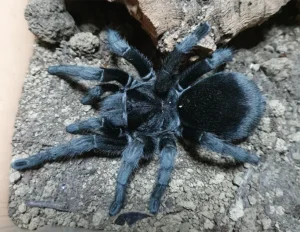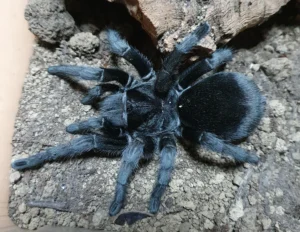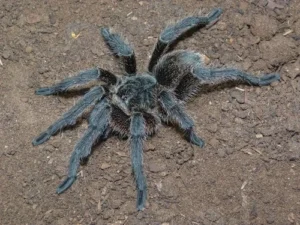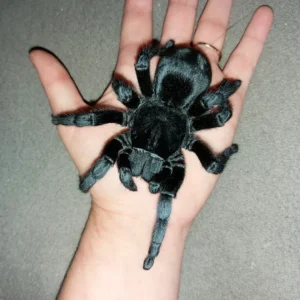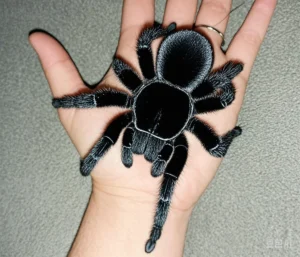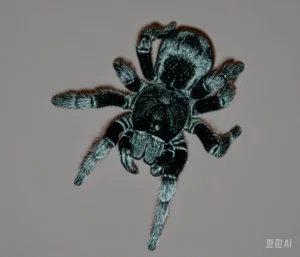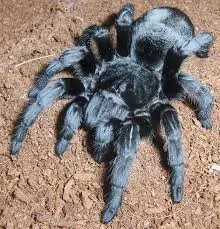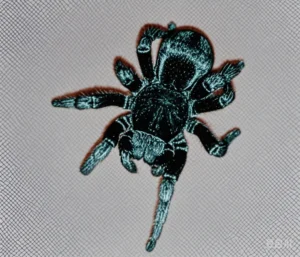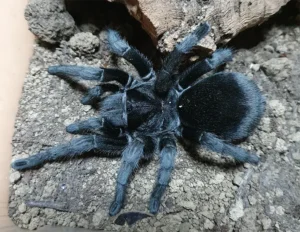Fasting Abilities of Grammostola pulchra: How Long Can They Survive Without Food?
One of the remarkable characteristics of tarantulas, including Grammostola pulchra, is their ability to endure extended periods without eating. This fasting ability is a natural adaptation tied to their opportunistic predatory lifestyle and slow metabolism. Understanding this can alleviate keeper anxiety when their tarantula refuses food.
Slow Metabolism
Tarantulas are ectothermic (cold-blooded) invertebrates with significantly slower metabolic rates compared to mammals or birds. They don’t need to constantly expend energy to maintain a high internal body temperature. Their energy requirements are much lower, allowing them to function for long durations on stored reserves.
Food is converted into energy and stored efficiently. When prey is unavailable, they can drastically reduce activity levels and rely on these reserves, primarily fat bodies within their abdomen.
Factors Influencing Fasting Duration
How long a Grammostola pulchra can fast depends on several factors:
- Age and Size: Adult and sub-adult tarantulas have larger reserves and slower relative metabolisms than rapidly growing spiderlings. Adults can potentially fast for many months, sometimes even exceeding a year in extreme cases, though this is not healthy long-term. Spiderlings need to eat more frequently to fuel growth and have smaller reserves, so they cannot fast for nearly as long (perhaps weeks rather than months).
- Body Condition: A well-fed, robust tarantula with a plump abdomen can fast for much longer than a thin or recently molted individual.
- Temperature: Higher temperatures generally increase metabolic rate, potentially shortening the maximum fasting duration. Cooler temperatures slow metabolism further.
- Hydration: Access to water is far more critical than food. Dehydration is a much more immediate threat than starvation. A fasting tarantula must still have access to fresh water.
- Activity Level: An inactive tarantula conserving energy in its burrow can fast longer than one that is frequently moving or stressed.

Reasons for Fasting
A G. pulchra might refuse food for various natural reasons, not necessarily indicating a problem:
- Premolt: This is the most common reason. As a tarantula prepares to molt, it typically stops eating, sometimes weeks or even months beforehand (especially large adults).
- Post-molt: After molting, the tarantula’s fangs are soft, and it needs time for its exoskeleton to harden. It will not eat during this vulnerable period (usually a week or two for adults).
- Satiation: It might simply not be hungry, especially if recently fed or if it’s a slow-growing adult.
- Stress: Environmental stressors (improper temperature/humidity, excessive handling, rehousing) can cause a tarantula to refuse food.
- Seasonal Changes: Some keepers observe reduced appetite during cooler months, even with stable enclosure temperatures.
- Old Age/Illness: While less common, prolonged refusal to eat unrelated to molting *could* indicate health issues or advanced age.
Learning how to approach [managing tarantula feeding strikes](https://www.lopehare.com/tarantula-pet-care/) involves observation and patience.
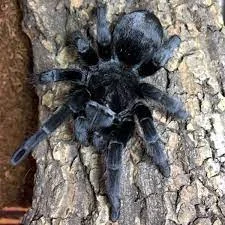
Husbandry Considerations
- Don’t Panic: If an otherwise healthy-looking adult G. pulchra with a decent-sized abdomen refuses food, it’s often normal, especially if a molt might be approaching.
- Monitor Abdomen Size: A shrinking, deflated-looking abdomen is a cause for concern, whereas a plump abdomen suggests the tarantula has reserves.
- Ensure Hydration: Always maintain access to fresh water via a water dish.
- Remove Uneaten Prey: Do not leave live prey in the enclosure with a fasting tarantula, especially if it’s in premolt. Crickets can nibble on and injure a vulnerable molting spider. Remove uneaten food within 24 hours.
- Check Husbandry: Ensure temperature, humidity, and security (hiding places) are appropriate.
While Grammostola pulchra can survive remarkably long periods without food, consistent offering of prey (e.g., weekly for adults, more often for juveniles) and monitoring their condition is part of responsible care. Prolonged fasting combined with other symptoms (lethargy unrelated to molt, shriveled abdomen) may warrant investigation.
References:
- General knowledge from experienced tarantula keepers and breeders.
- Information on invertebrate metabolism and physiology.

